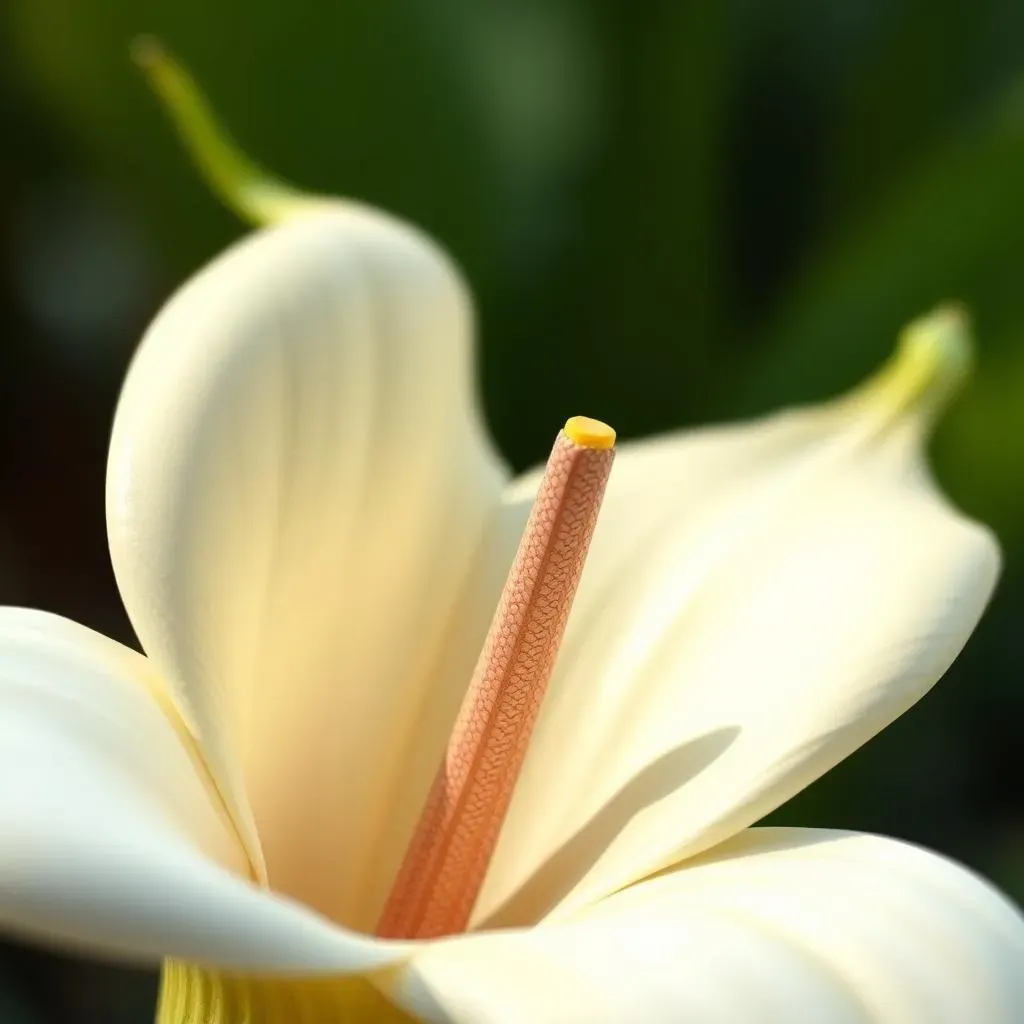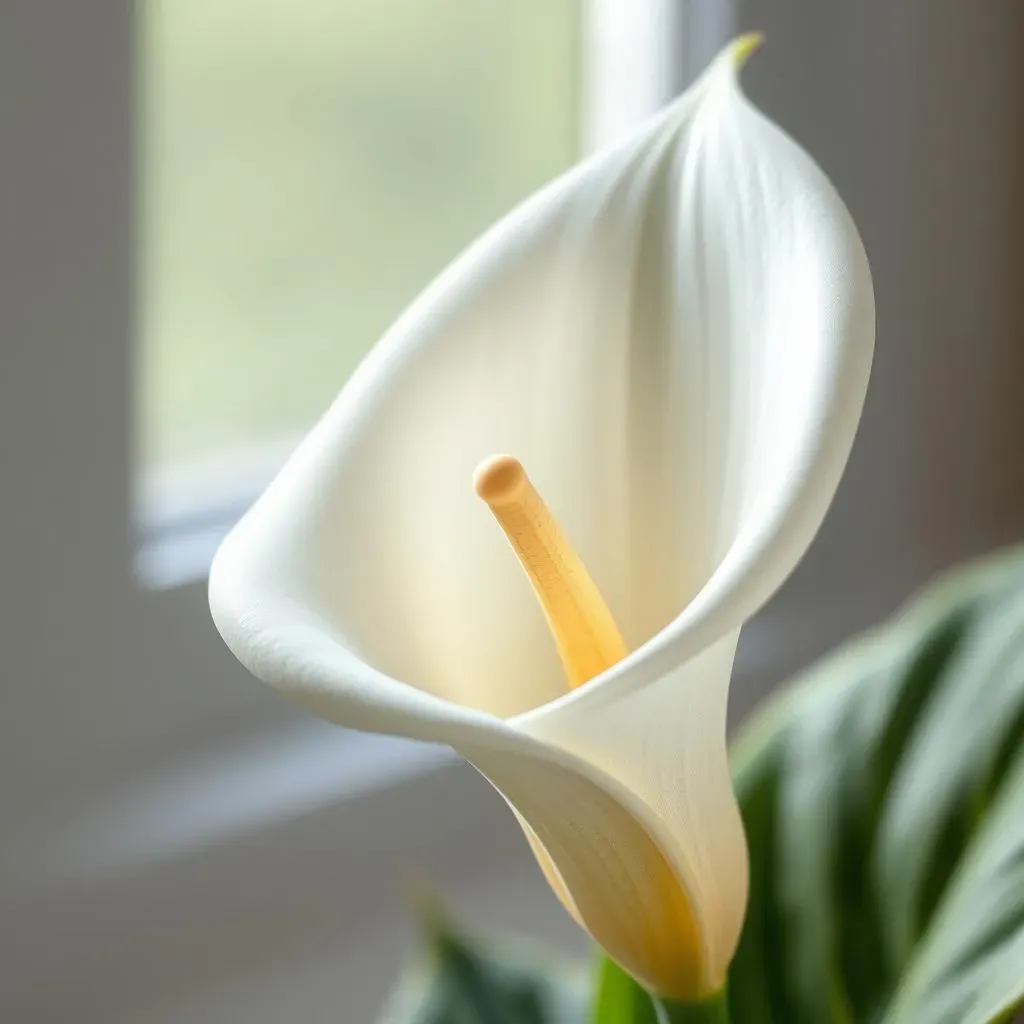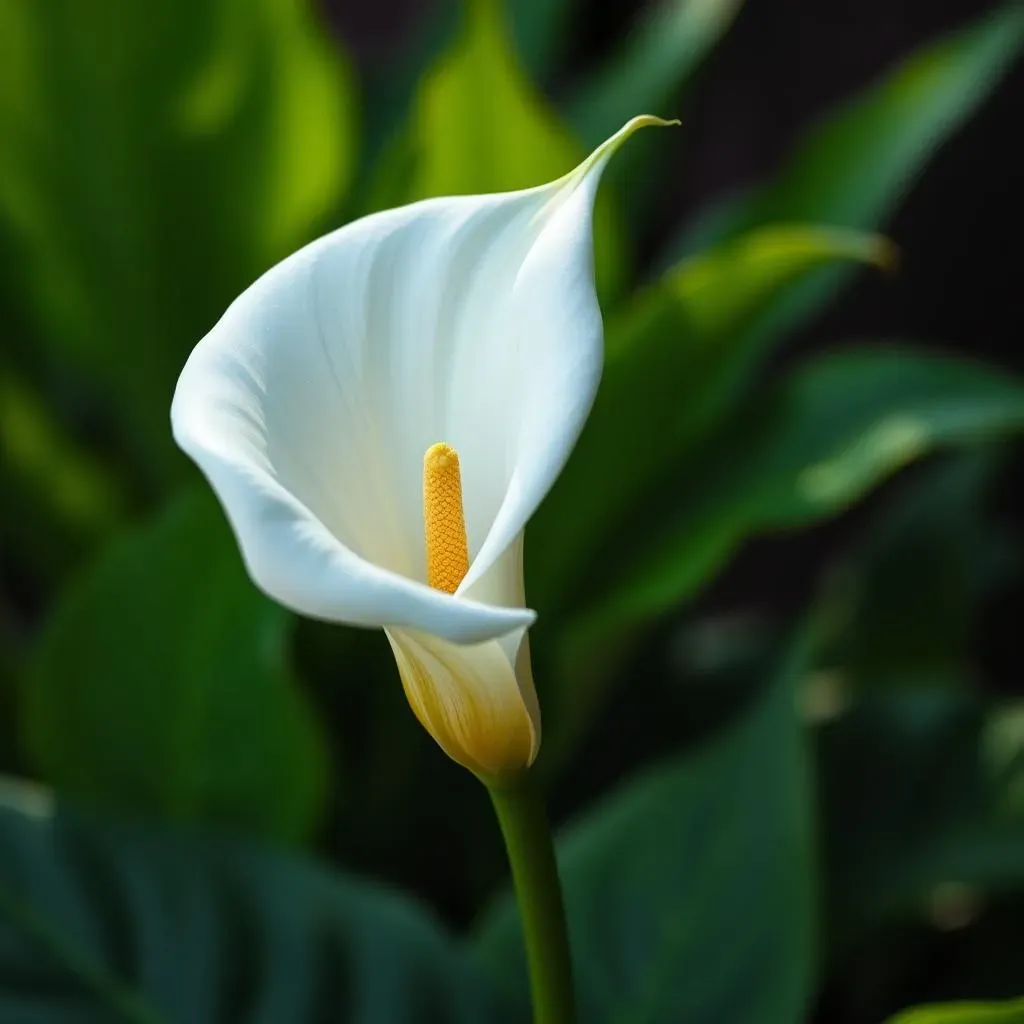Table of Contents
Have you ever gazed upon a calla lily and wondered about the intricacies of its elegant form? This article is your passport to understanding the fascinating world of "calla lily flower anatomy." We'll embark on a journey to explore the unique structure of this captivating bloom, revealing the secrets hidden within its seemingly simple design. Prepare to be amazed as we dissect the flower's components, from the striking spathe—that petal-like modified leaf—to the intriguing spadix, where the true flowers reside. We'll uncover the mysteries of its reproductive mechanisms and delve into the botanical terminology needed to fully appreciate its complexity. Beyond the basics, we'll also discuss practical tips for cultivating and caring for your own calla lilies, ensuring their vibrant beauty thrives. Get ready to transform your appreciation of this stunning flower as we unravel the captivating details of calla lily flower anatomy!
Calla Lily Flower Anatomy: A Closer Look

Calla Lily Flower Anatomy: A Closer Look
The Enigmatic Spathe
Let's start with the most striking feature: the spathe. That's the large, petal-like structure that often comes in creamy white, but can also be yellow, pink, or even purple depending on the cultivar. It's not a true petal, though—it's a modified leaf, cleverly designed to attract pollinators and protect the flower's reproductive parts. Think of it as a beautiful, protective wrapper for the real action happening inside.
The spathe's shape is crucial. Its trumpet-like form acts like a funnel, guiding insects towards the spadix—the central, finger-like structure that bears the tiny, actual flowers. The spathe's vibrant color and sometimes even a subtle fragrance also play a key role in attracting pollinators, ensuring the plant’s continued success.
Spathe Feature | Function |
|---|---|
Modified Leaf | Attracts pollinators, protects reproductive parts |
Shape (Trumpet-like) | Guides insects to the spadix |
Color & Fragrance | Enhances pollinator attraction |
The Mysterious Spadix
Now, let’s move to the spadix, the often-overlooked heart of the calla lily. This fleshy spike is covered in tiny, individual flowers. These flowers are quite unlike the showy spathe. They’re small, inconspicuous, and clustered tightly together along the spadix. The arrangement is incredibly efficient: it maximizes the chances of successful pollination.
Interestingly, the spadix bears both male and female flowers, a characteristic known as monoecy. The female flowers are located at the base of the spadix, while the male flowers sit higher up. This arrangement helps prevent self-pollination, promoting genetic diversity. The tiny flowers themselves are simple in structure, lacking the showy petals we associate with other flowers.
- Monoecious: Both male and female flowers on the same spadix
- Female flowers at base, male flowers higher up
- Tiny, inconspicuous individual flowers
Understanding the Calla Lily's Unique Floral Structure

Understanding the Calla Lily's Unique Floral Structure
Reproductive Strategies: A Closer Look
Now, let's talk about how the calla lily actually reproduces. Remember that monoecious thing? The arrangement of male and female flowers on the spadix isn't just a neat botanical fact; it's a clever strategy to avoid self-pollination. By keeping the female flowers at the base and the males higher up, the lily increases the chances of cross-pollination. This means pollen from one plant fertilizes the ovules of another, leading to more diverse and resilient offspring. Think of it like a sophisticated dating system for plants—it's all about finding the perfect match for genetic success!
Pollinators, typically insects drawn to the spathe's allure, play a crucial role. As they navigate the spathe's funnel, they brush against the pollen-bearing male flowers first, picking up pollen on their bodies. Then, as they move deeper towards the female flowers at the base, they deposit that pollen, initiating fertilization. This ingenious system ensures genetic variety and the continuation of the species. It’s a testament to the elegance and efficiency found in nature's designs.
Reproductive Strategy | Description |
|---|---|
Monoecy | Both male and female flowers on the same spadix. |
Spatial Separation | Female flowers at the base, male flowers higher up. |
Pollinator Dependence | Relies on insects for cross-pollination. |
Beyond the Basics: Variations in Calla Lily Anatomy
While we’ve focused on the typical white calla lily, remember that there’s a wonderful diversity within the species. Different cultivars boast spathes in a range of colors, from sunny yellows and vibrant pinks to deep purples and even maroons. These color variations don't just affect the flower's aesthetic appeal; they often reflect adaptations to different pollinators or growing conditions. A yellow spathe might attract a different set of insects than a purple one, showcasing the intricate relationship between flower structure and its environment.
Furthermore, the size and shape of the spathe and spadix can also vary between cultivars. Some have more dramatically flared spathes, while others have a more subtle, elegant form. These variations are not merely cosmetic; they often reflect subtle differences in pollination strategies or even adaptations to different climates. This diversity highlights the remarkable adaptability of the calla lily and the ongoing evolutionary processes that shape its anatomy. It’s a reminder that even within a single species, there's a wealth of fascinating variation waiting to be discovered.
- Spathe Color Variation: Yellow, Pink, Purple, Maroon
- Spathe and Spadix Size and Shape Variations
- Adaptations to Different Pollinators and Environments
Calla Lily Flower Anatomy: Cultivating and Caring for Your Blooms

Calla Lily Flower Anatomy: Cultivating and Caring for Your Blooms
Sunlight and Soil: Setting the Stage for Success
Choosing the right location is key to a thriving calla lily. These beauties appreciate a balance of sun and shade. Think of it like Goldilocks and the Three Bears—too much sun and they'll scorch, too little and they'll become leggy and weak. A spot with morning sun and afternoon shade often works perfectly. As for soil, they prefer rich, moist, well-draining soil. Think of it like a luxurious spa treatment for their roots—plenty of nutrients and good drainage to prevent soggy conditions.
Remember, consistently damp soil is crucial, but avoid waterlogged conditions. This is where a well-draining soil type comes in handy. You can also improve drainage by adding organic matter like compost to your garden soil. Think of it as adding a fluffy layer of luxury for your calla lily's roots. This will help retain moisture without letting the roots drown. With the right sunlight and soil, your calla lilies will thank you with abundant blooms.
Factor | Ideal Conditions | Why it Matters |
|---|---|---|
Sunlight | Morning sun, afternoon shade | Prevents scorching and leggy growth |
Soil | Rich, moist, well-draining | Provides nutrients and prevents waterlogging |
Watering and Feeding: Nurturing Your Calla Lilies
Consistent watering is crucial, especially during the growing season. Think of your calla lilies as thirsty plants—they need regular drinks to stay hydrated and produce those gorgeous blooms. Let the top inch of soil dry out slightly between waterings, but avoid letting the soil completely dry out. Overwatering can lead to root rot, while underwatering can result in wilting and stunted growth. Find that happy medium, that sweet spot of consistent moisture.
Feeding your calla lilies is like giving them a vitamin boost. During the growing season, fertilize them regularly with a balanced liquid fertilizer, following the instructions on the package. Think of it as providing extra nutrients to fuel their growth and abundant flowering. Avoid over-fertilizing, though, as this can burn the roots. The key is consistency and moderation—a little goes a long way in nurturing these beautiful blooms. With proper watering and feeding, you'll be rewarded with a spectacular display of calla lily beauty.
- Water regularly, keeping soil consistently moist but not waterlogged.
- Fertilize regularly during the growing season with a balanced liquid fertilizer.
- Avoid over-fertilizing, which can harm roots.